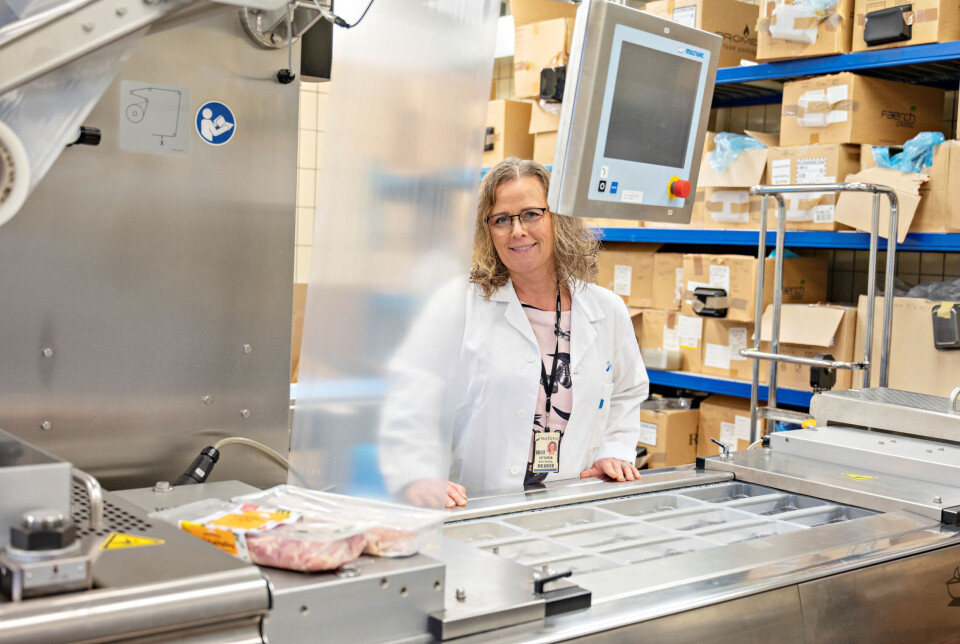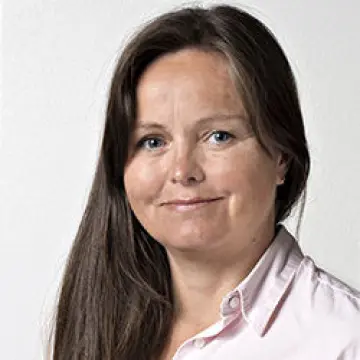THIS ARTICLE/PRESS RELEASE IS PAID FOR AND PRESENTED BY Nofima The Norwegian Institute of Food, Fisheries and Aquaculture Research - read more

Chicken fillets can be packaged in recyclable plastic without affecting either the quality or shelf life
Reducing the environmental footprint of food packaging and ensuring that quality is maintained is important.
“Our studies show that it is possible to optain similar quality and shelf life for chicken fillet products when they are packed in recyclable packaging made from recycled plastic compared to conventional and nonrecyclable plastic materials,” says Nofima Senior Scientist Marit Kvalvåg Pettersen.
Packaging must protect the food
The most important function of food packaging is to protect the food. Chicken fillet packaging must therefore have good barriers against gases such as oxygen, withstand moisture and have a certain mechanical strength –in addition to being sealable.
Pettersen has led the research in the innovation project ReducePack, and is responsible for the packaging trials where Nofima’s experts and Norsk Kylling AS have tested and compared recyclable packaging materials with more complex materials.
Among other things, they have investigated whether recyclable materials preserve the quality of chicken thigh fillets as well as more complex materials.
The same quality
Two different types of trays were used to package and store chicken thigh fillets. They were packaged at the same time and under identical conditions.
One of the trays was a mono-material. This means that it consists of only one type of plastic. The other tray consists of different types of plastic, called multilayer.
The advantage of multilayer packaging is that plastics with different properties can be combined, resulting in very good barriers against gases such as oxygen.
The disadvantage is that they cannot be mechanically recycled.
“We stored the fillets and performed relevant microbiological analyses during its shelf life. We investigated the development of quality-deteriorating bacteria. There were no significant differences between thigh fillets packaged in mono-materials and thigh fillets packaged in multilayer packaging,” Pettersen says.
Key sustainability measures
Pettersen adds that these are promising results in terms of replacing food packaging that cannot be recycled with food packaging that is both recyclable and can consist of recycled plastic.
Using recycled and recyclable packaging is an important ambition for the participants in ReducePack.
“100 per cent of our packaging will be made of recyclable material. We will achieve this without compromising quality, food safety or increasing food waste. We are well underway and are proud of our collaboration with Nofima in ReducePack, which further contributes to achieving our goals,” Hilde Talseth says.
She is the Director of Sustainable Innovation at Norsk Kylling.
What do the consumers think?
Researchers, the food industry and the grocery industry all agree that reducing plastic consumption and switching to more environmentally friendly packaging materials should not affect the quality or shelf life of food.
Nevertheless, it is interesting to know more about what consumers think.
In addition to a large consumer test, ReducePack has also carried out a smaller store test in two Rema 1000 stores.
The aim was to find out whether reduced shelf life resulted in increased wastage in stores. The test took place over a total of four weeks. Packages of chicken thigh fillets (600 grams) at the fresh produce counter had different labelling:
- Option 1: Standard label, with reduced shelf life
- Option 2: Standard label, with reduced shelf life and additional label marked “New packaging with reduced plastic. The plastic can be recycled.”
Everything was sold
For the first two weeks, option 1 was available in the two Rema 1000 stores. For the next two weeks, option 2 was available. Sales and wastage were registered throughout the period.
The results showed that the reduced shelf life did not affect waste in stores. All packages were sold, and the majority within three to four days. Thus, it was not possible to draw any conclusions about the significance of the additional label.
In addition to the wastage survey, the researchers wanted to gain more knowledge about consumers’ preferences. They showed three different packaging options to customers who were going to buy chicken thigh fillets.
In addition to the above options, customers also had the opportunity to choose a package with a standard label and normal shelf life.
A 4-day window of opportunity
Among the customers interviewed, just over half chose chicken thigh fillets in the packaging with the label “New packaging with reduced plastic. The plastic is recyclable”.
90 per cent of these stated that they chose this packaging because of the additional information on the label. The rest made their choice based on the appearance of the chicken.
13 per cent of customers chose packaging with the longest shelf life, and for 57 per cent of these the expiration date was the deciding factor, while approximately 35 per cent made their decision based on the appearance of the chicken fillet.
All in all, only 9 percent of those asked were driven by the longest shelf life in their choice of product. This is surprising considering a whole 75 per cent look at the expiry date when they buy fresh chicken.
The results of the store interviews confirm previous findings from a larger online study with over 300 consumers in Oslo, Trondheim and Tromsø. It showed that 80 per cent prepare fresh chicken 0-4 days after purchase. An additional 15 per cent freeze their chicken after purchase for later use.
“The results from both the store interviews and the online survey are consistent; both indicate that a shorter shelf life of 4 days is within the window of opportunity and maintains high consumer acceptance,” senior scientist Valérie Lengard Almli at Nofima says. She has led consumer research at ReducePack.
Environmental benefits of recycling
Recycling plastic material has several advantages:
- Greenhouse gas emissions are reduced because less material is sent for incineration
- The recycling process has lower greenhouse gas emissions than combustion
- Recycled material can replace virgin plastic.
However, this assumes that the recycled material is used so that it replaces the use of virgin material.
“Using mono-materials is a good strategy to facilitate recyclable of the material. At the same time, it is important that the person designing a material knows the waste market for material recycling, to ensure that the material is actually recycled when designing for this purpose,” Simon Saxegård, researcher at Norsus, says.
The research in ReducePack shows that the use of a large proportion of recycled plastic in food packaging is a good and safe strategy to reduce greenhouse gas emissions associated with the packaging itself.
Having said this, even lower greenhouse gas emissions are achieved by using recycled material which can in turn be recycled. This provides a climate-related synergy effect for the entire recycling system because it helps to ensure that a material is recycled multiple times.
Reduced amount of material has a great effect
Reducing the amount of material also helps to reduce environmental impacts. It can be done by reducing the packaging size or plastic thickness.
“The research in ReducePack shows that by using thinner plastic material, which provides a 10 per cent weight reduction, we can reduce our environmental impact by 10 per cent,” Saxegård says.
However, the most important thing is that the packaging protects the food as well as before, so that food waste does not increase.

This article/press release is paid for and presented by Nofima The Norwegian Institute of Food, Fisheries and Aquaculture Research
This content is created by Nofima's communication staff, who use this platform to communicate science and share results from research with the public. Nofima is one of more than 80 owners of ScienceNorway.no. Read more here.
See more content from Nofima:
-
Red algae grown in wastewater from fish-farming facilities could become sustainable salmon feed
-
Pumpkins are good for more than just Halloween decorations
-
This is how temperature affects a salmon's health and growth
-
Study: Omega-3 and zinc is a powerful duo for salmon
-
Fish may turn yellow if frozen too fresh
-
Is it better if food is packaged in plastic or paperboard?





































